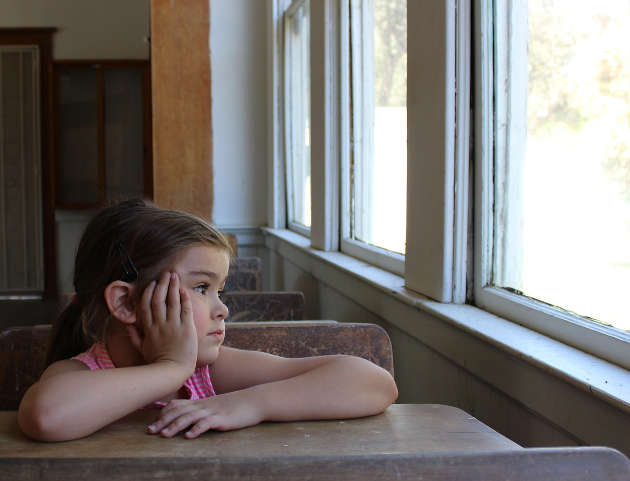For many, Covid-19 was an eye-opener for the importance of indoor air quality. One of the most important pollutants indoors is Carbon Dioxide (CO2). Children spend a large portion of the day at school. Research shows that there are high levels of CO2 in many classrooms. Those high CO2 levels affect the sense of wellbeing, and even worse: school grades.
CO2 levels in school too high
The Western Cooling Efficiency Center (UC Davis ) shows: “Research from around the world shows there are high CO2 levels in many classrooms. For example, in a 2019 study, researchers found that about 85% of 94 recently installed HVAC systems in California K-12 classrooms did not provide adequate ventilation.”They investigated 104 classrooms in California. 85% did not have proper ventilation, which means increased levels of CO2.
In indoor testing between 2010 and 2015, 43% of Toronto schools had a CO2 concentration above 1000 ppm.
Why does the last hour always take ages?

After sitting the whole day at school, the last hour seems to take ages. Always getting a headache. You can’t concentrate and think properly. Probably the cause it isn’t the teacher. It’s you, the students.
Students and the teacher breathe oxygen into the lungs as energy. The oxygen sticks to red blood cells and is transported to organs and muscles, so your heart can pump, you can think with your brain and contract your muscles. This ‘burning’ process of oxygen turns into carbon dioxide (CO2) and water vapor, which are released back into the environment.
When the ventilation is poor, the ‘used’ air will not dilute enough with ‘new’, fresh air from outside. So, especially with many people in a closed room (like a class-room) and the ventilation is poor, the oxygen in this room gets more and more replaced by CO2.
CO2 itself is not toxic. In fact, it’s a natural part of the atmosphere. It’s the fact that it’s replacing the oxygen concentration because a high concentration of CO2 is toxic. (That’s why CO2 is called an ‘asphyxiant gas’: a nontoxic or minimally toxic gas which reduces or displaces the normal oxygen concentration in breathable air.)
How CO2 levels affect school results
Due to the fact that the student inhales less oxygen, less oxygen goes to the brains. If there’s too much CO2, students may find it hard to pay attention to the teacher. Or concentrate on tests. Or stay awake at all. Besides, high levels of CO2 may affect the ability to make decisions. So, without even realizing yourself, high CO2 can damage your productivity and your school results. Besides, when we think of gasses, we think smell will warn us. However, CO2 is odourless.
CO2 might also cause physically complaints:
- Headache
- Feeling dizzy or nauseous
- Tired
- Trouble breathing
- Worsen asthma symptoms, allergies and lung health
You yourself might feel complaints, while the student next to you doesn’t feel anything. How you react, depends on several factors – such as: your own health, heredity, personal habits as smoking and drinking, use of medicine, previous exposure to chemicals.
What are high CO2 Levels?
As said, CO2 is a gas that is a natural part of the air. CO2 is measured in so-called parts per million (ppm). Outside, the normal level is about 400ppm. Otherwise said: per 1 million parts in the air, 400 of them consists of carbon dioxide. Before the industrial revolution, this level was about 280 ppm.
In general, occupied rooms with good ventilation have 400 – 1,000ppm. However, from 800 ppm, people may begin to suffer, maybe without knowing themselves.
From 1,000 to 2,000 ppm, people get complaints of drowsiness and poor air. When the level is between 2,000 to 5,000 ppm: complaints of headaches and sleepiness. The air becomes stale, stagnant and stuffy. As a consequence, people have lower concentration and loss of attention. An increased heart rate and slight nausea may also be the case.
From more than 5,000 ppm, the air becomes toxic and more serious effects can occur.
Common HVAC Issues resulting in high CO2 levels
In modern times, schools and other buildings are built with comfort in mind: to create a comfortable, warm space, thanks to isolation and… However, this comfort may come with a downside. Because a room is too closed from the outside world, this may result in the lack of replacing the air inside with fresh air from outside.
In the California study, 85% of the classrooms did not provide adequate ventilation. ‘“We were shocked,” said Wanyu Rengie Chan, one of the lead researchers of the study, “We were not expecting it.”’ They were shocked, because it involved classrooms with newly installed HVAC.
What are HVAC issues, causing high CO2 levels?
- Problems with installation of HVAC systems
- Incorrect HVAC systems purchased
- Incorrect controls and thermostats
- No follow-up testing after installation
- Poorly-maintained filters
(Source: Ventilation Rates in California Classrooms study)
CO2 monitoring helps
Children spend many hours indoors at school. Therefore, it is important to have a good indoor air quality. For the feeling of well-being for the children and teacher, but also for the children’s grades. You can measure the CO2 with a CO2 meter, or a sensor which combines the monitoring of CO2 with temperature, humidity and Volatile Organic Compounds, for instance ASN’s Covid-AIRMEX.
